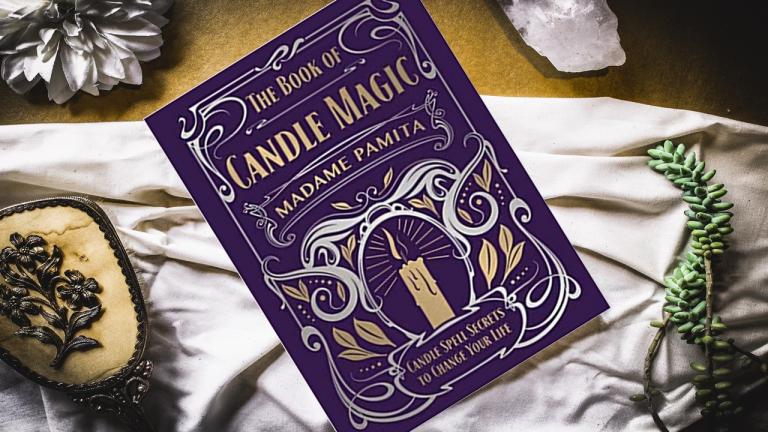I really lit up reading this book.
Nope, I’m not even a little bit sorry for that pun.
The Book of Candle Magic is remarkable in part because it covers a lot of introductory material without becoming overly vague, or patronizing, or simplistic. Madame Pamita not only knows this material, but also knows how to communicate that knowledge. This is the first of Pamita’s books that I have read, and I came away feeling like I had acquired knowledge that I can actually apply. Pagan audiences range from doe-eyed to jaded, and I envy the ability to write like this, to resonate with strongly with such a diverse readership.
Candle magic is contrary to my usual style: Madame Pamita writes, “Unlike something like a charm bag that you may carry with you every day for a year or more, a candle spell packs that punch into . . . ‘right now.'” I have a spell on my altar that I’ve been working for over ten years, and it’s fun to learn about magic that works on a different level. Many common magical techniques are explained, using clear language, in the context of how they can be used in a candle spell. These include astrological timing, sigils, petition papers, honey jars, and written or spoken spells. Numbers are covered in two ways: more ornate spells that involve burning multiple candles simultaneously or in succession are detailed, and there’s also a discussion of numerology and how it can be incorporated. Madame Pamita does make it clear that simple spells involving just one candle are effective, but it at some point I might want to try arranging several candles in a specific layout to enhance the work. I’m fortunate in that I have a bathtub; there isn’t a safer place in my home to burn a candle.

There is an entire chapter devoted to the practical aspects of working with candles, such as how to avoid setting the house afire, the purpose of tools like snuffers and wick dippers, and how to select the correct holder for a given candle. Lessons on how to incorporate oils, herbs, papers, and stones without disrupting the primary focus—burning of candles—are also included. In another chapter, Pamita goes over how to make candles and infuse them with the intended energies from the start. Pamita also includes details on how to interpret the results of a spell by reading how the candle burns.
What stands out for me is how the author introduces basic concepts, and gently adds in options that can introduce complexity in a way that allows the reader to absorb at an individual pace. It is possible to consider candle color, oils, herbs, direction, astrological hour, moon phase, and many other aspects when design a spell, but one can also light a birthday candle and blow it out. This is true of most types of magic, but Pamita has a way of not letting the simple core get lost in the layering on of more variables.
Quirks: this is a hardcover book. That was the standard not very long ago, but it’s now a rarity. I do not know why the decision was made to give this book a hard cover, but I am glad it happened that way. This is a book that stands out on my shelf, thrills me to hold in my hands, and feels like a timeless reference rather than a passing fancy—all because of that cover. I applaud the choice.
Quibbles: how magic works continues to be the focus of ongoing debate. Some, like Madame Pamita, think that intention and belief are the key; others argue that while intention helps focus and belief is motivational, that neither is necessary. It’s fine that the author has a position, but I think it would have been helpful to acknowledge that this is not settled science.
All told, this is an incredibly well-written and informative book that will advance the understanding of how to safely and effectively use candles in spell work.
Interested in having your book given an unbiased review? Let me know!
Title: The Book of Candle Magic
Author: Madame Pamita
Publisher: Llewellyn
ISBN: 978-0-7387-6473-3


















